Incredibly, more than 900 unique dinosaur genera have been identified by experts with the help of fossil records! However, only a very small group have names starting with W. Below, we’ll take a look at 13 of these fascinating dinosaurs whose names all start with the letter W.
1. Wadhurstia
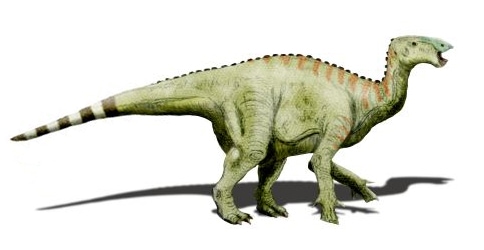
Wadhurstia is also known as Hypselospinus.
©Nobu Tamura / CC BY-SA 3.0 - License
This unique dinosaur was originally described as an Iguanodon species, Hypselospinus, back in 1889. However, in 2010, it was re-classified into a separate genus by British paleontologist David Norman. Another group of scientists placed the dinosaur into its newly-named genus, Wadhurstia. Today, the two names Wadhurstia and Hypselospinus are considered synonymous. This species lived about 140 million years ago during the lower Valanginian stage of the early/lower Cretaceous period.
2. Walgettosuchus

Walgettosuchus has been identified from a single caudal vertebra.
©Stephen F. Poropat, Phil R. Bell, Lachlan J. Hart, Steven W. Salisbury, & Benjamin P. Kear / CC BY-SA 4.0 - License
Also known as the Walgett crocodile, this dinosaur is largely a mystery, as it is known from just a single vertebral bone. This theropod dinosaur lived in Australia during the Late Cretaceous period. Its type species, Walgettosuchus woodwardi, was named in 1932 by German paleontologist Friedrich von Huene.
3. Walkeria/Alwalkeria

Walkeria’s original name was changed to Alwalkeria in 1994.
©No machine-readable author provided. Karkemish assumed (based on copyright claims). / CC BY 3.0 - License
This particular dinosaur has gone by two unique names since it was officially discovered and named in 1987. Paleontologist Sankar Chatterjee originally named the species Walkeria maleriensis in honor of another British paleontologist, Alick Walker. However, this name was already occupied by another species, so in 1994, its name was edited slightly to Alwalkeria. Its only known specimen is made up of a collection of bones from its jaws, vertebrae, a femur, and an ankle bone. It lived during the Late Triassic period in India.
4. Walkersaurus
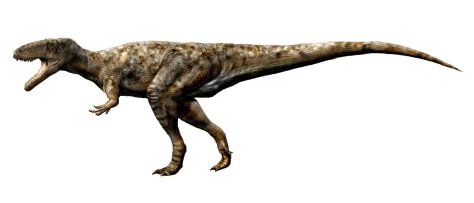
Walkersaurus lived during the Middle Jurassic period.
©Nobu Tamura / CC BY-SA 3.0 - License
This dinosaur starting with W actually goes by the name Duriavenator hesperis now, but that wasn’t always the case. Its original name was Walkersaurus. This medium-sized theropod lived in what is now England during the Middle Jurassic period over 160 million years ago. Its jaw bones were first discovered in 1882 near Sherborne in Dorset, located in South West England.
5. Wannanosaurus
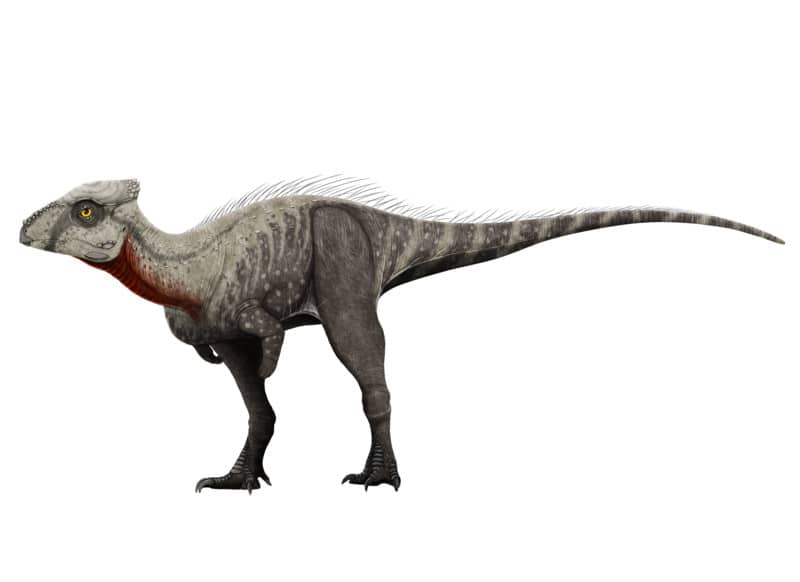
This dinosaur gets its name from the area in China where its fossils were discovered.
©Cesar Diaz / CC BY-SA 4.0 - License
This dinosaur is known from a single incomplete skeleton. Its name literally means “Wannan lizard,” which is a reference to the area in Anhui, China, where it was discovered. Its type species, Wannanosaurus yansiensis, was originally described in 1977. It lived around 70 million years ago, and some of the bones that make up its partial skeleton include a lower jaw and skull fragment, a tibia and femur, and part of a rib. As a pachycephalosaurus, it was most likely a herbivore or omnivore.
6. Weewarrasaurus
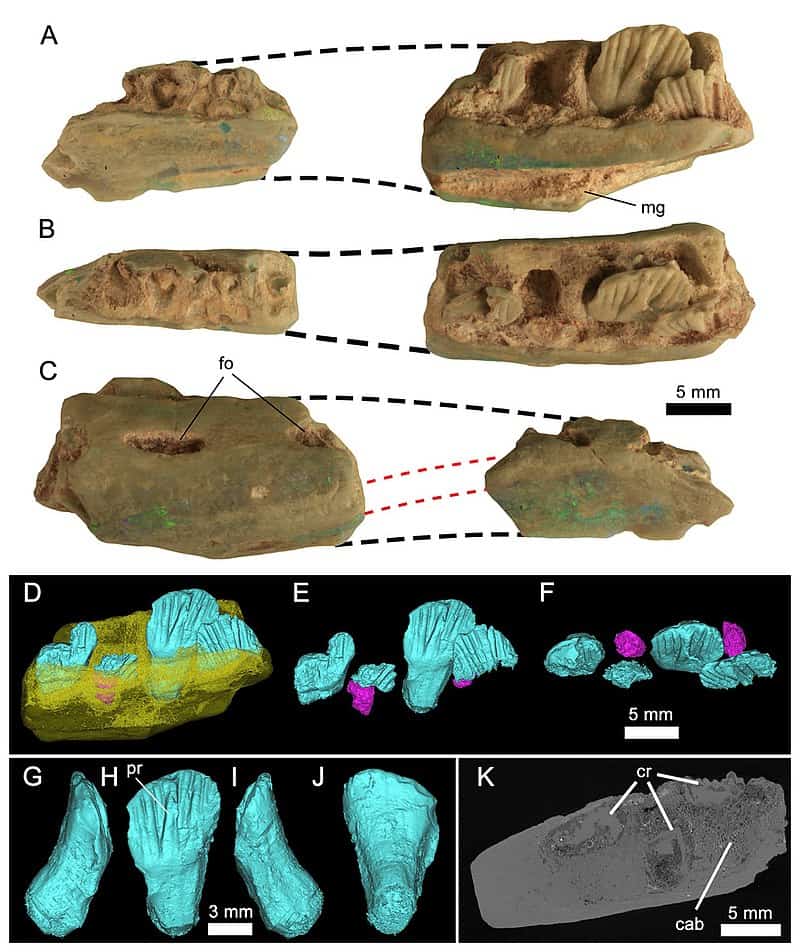
Seen here are the portions of jaw bone and teeth Weewarrasaurus is known from.
©Phil R. Bell, Matthew C. Herne, Tom Brougham, Elizabeth T. Smith / CC BY 4.0 - License
Weewarrasaurus is a type of ornithopod dinosaur. Ornithopods are largely small, two-legged grazing dinosaurs that eventually grew larger in size over time. Eventually, they became some of the most successful Cretaceous-era herbivorous dinosaurs to ever live. Notably, Weewarrasaurus’ type specimen is known from just two parts of a jaw bone, along with some teeth. It gets its name from the Wee Warra geological formation of the Griman Creek Formation in New South Wales, Australia. Here, it was discovered in 2013 by a group of miners.
7. Wellnhoferia
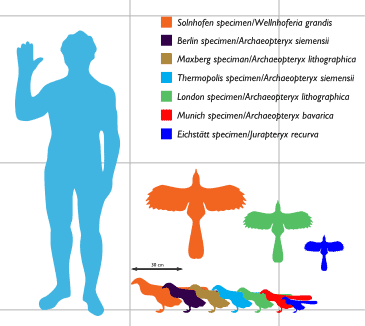
Seen here is
Wellnhoferia grandis‘ comparison in size to other similar specimens.
©Matt Martyniuk / CC BY 3.0 - License
This bird-like theropod dinosaur starting with W is closely related to the popular Archaeopteryx! It lived during the Late Jurassic period in Germany. Compared to the Archaeopteryx, Wellnhoferia had a shorter tail and a shorter fourth toe. It gets its name from German paleontologist Peter Wellnhofer. Its type specimen was discovered in the 1960s near Eichstatt, Germany.
8. Wendiceratops

This is an artist’s reconstruction of Wendiceratops’ skeletal structure.
©David C Evans and Michael J Ryan, recolored by Skye McDavid / CC BY-SA 4.0 - License
Wendiceratops is a collective genus of dinosaurs that lived during the Late Cretaceous period in what is now Canada. Its original fossils were discovered in 2010 by Canadian fossil hunter Wendy Sloboda. It’s a herbivorous dinosaur, as well as a ceratopsian dinosaur, meaning it has a beak-like mouth. Its type species was named Wendiceratops in 2015 in honor of Sloboda. The -ceratops part of its name simply means “horn face” in Latinised Greek.
9. Wiehenvenator
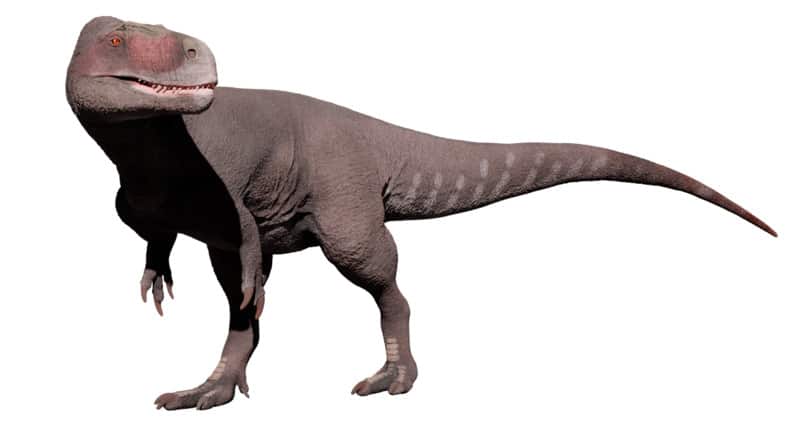
This artist’s restoration is based on a close relative of Wiehenvenator.
©Petr Menshikov / CC BY-SA 4.0 - License
Wiehenvenator is also a genus of dinosaurs that were megalosaurids, meaning a carnivorous type of theropod dinosaur. Theropods were dinosaurs with hollow bones and three toes and claws on each limb. Wiehenvenator dinosaurs lived during the Callovian period of the Middle Jurassic epoch in what is now northwestern Germany. Notably, the genus only contains one species: W. albati.
10. Wintonotitan

Wintonotitan lived during the Late Cretaceous period.
©Artwork: T. Tischler, Australian Age of Dinosaurs Museum of Natural History. / CC BY 2.5 - License
This dinosaur starting with W is known from just partial remains of its skull. Its name essentially means “Winton titan,” referring to the Winton Geological Formation of Australia, where its remains were discovered. Its fossils were discovered in 1974 by Keith Watts. This titanosauriform dinosaur was a very large sauropod belonging to the clade Macronaria. This clade had particularly wide nasal openings compared to other dinosaurs. It lived during the Late Cretaceous Cenomanian period.
11. Wuerhosaurus
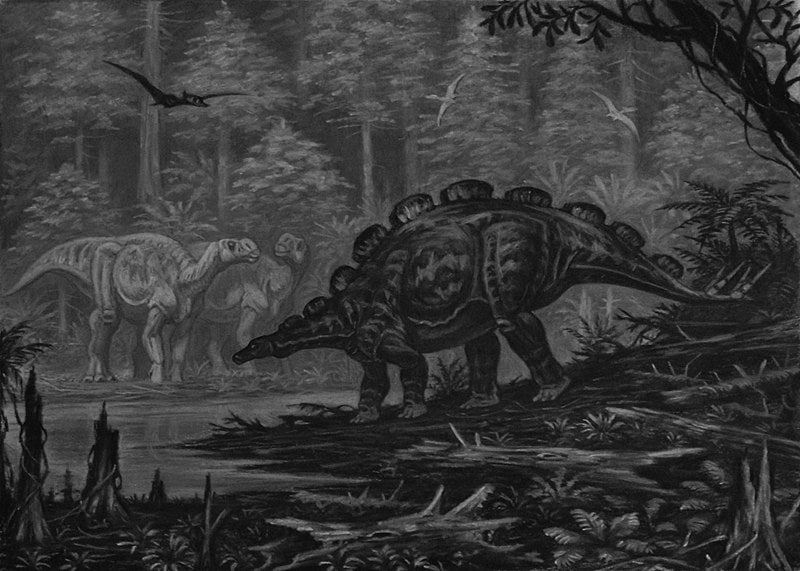
The species’ stegosaurian spinal plates are clearly visible in this artist’s reconstruction.
©ABelov2014 (https://abelov2014.deviantart.com/) / CC BY-SA 3.0 - License
This genus of stegosaurid dinosaurs lived during the Early Cretaceous period in what is now Mongolia and China. Notably, it was one of the last stegosaurian dinosaurs to ever exist. Its type species, Wuerhosaurus homheni, was first described in 1973 by Chinese paleontologist Dong Zhiming. The dinosaur’s name comes from the city of Wuerho, China, located in the Orku District. Its type species’ body was very broad, and it weighed at least four metric tons while measuring over 20 feet long.
12. Wulagasaurus

Wulagasaurus’ duck bill-shaped snout is visible in this artist’s rendition.
©Connor Ashbridge / CC BY-SA 4.0 - License
This dinosaur starting with W’s name essentially means “Wulaga lizard,” referring to the area in Heilongjiang, China, where its remains were initially discovered. It was a hadrosaurid dinosaur, meaning it had a distinctly duck-bill-like shape to its snout. It lived during the Late Cretaceous period. Its remains were dated to around 69 million years ago. They were found in a bonebed in the Yuliangze Formation in Heilongjiang, China. Its size was estimated in 2010 to be around 30 feet long and at least 3.3 tonnes. Like most other hadrosaurids, it would have been herbivorous in nature.
13. Wulatelong

had a distinctly dragon-like appearance.
©Jaime A. Headden (User:Qilong) / CC BY-SA 3.0 - License
The Wulatelong genus of dinosaurs starting with W contains just one species: Wulatelong gobiensis. This dinosaur lived during the Campanian stage of the Late Cretaceous period. Its remains were discovered in the Wulansuhai Formation in Mongolia and China. Its name comes from the word Wulate, referring to where the fossils were discovered, and “long,” the Chinese word for dragon (due to its dragon-like appearance). Notably, the remains of many other dinosaurs have been discovered in the Wulansuhai Formation, an incredibly fossil-rich region.
The photo featured at the top of this post is © Cesar Diaz / CC BY-SA 4.0 – License / Original
Thank you for reading! Have some feedback for us? Contact the AZ Animals editorial team.







